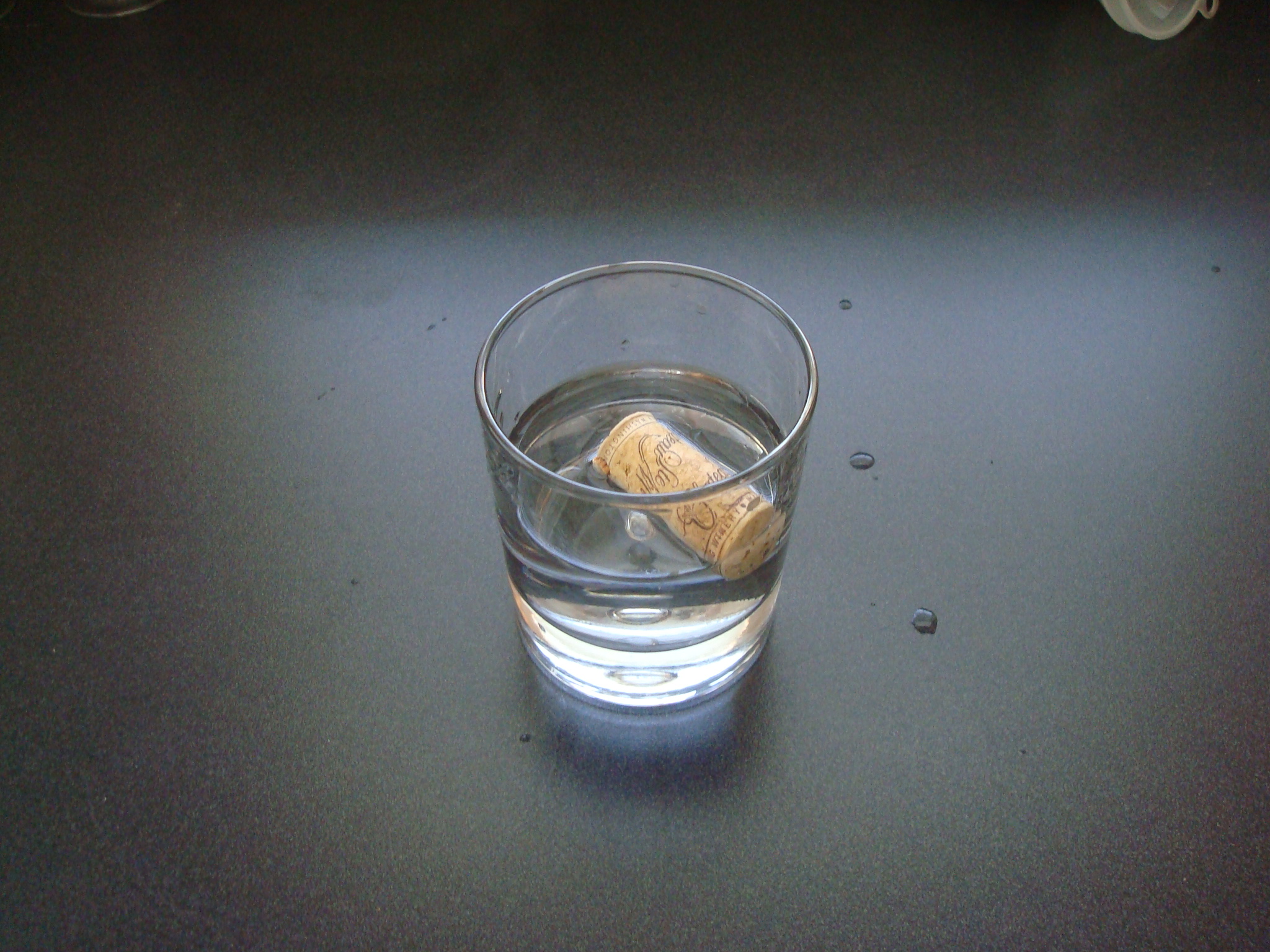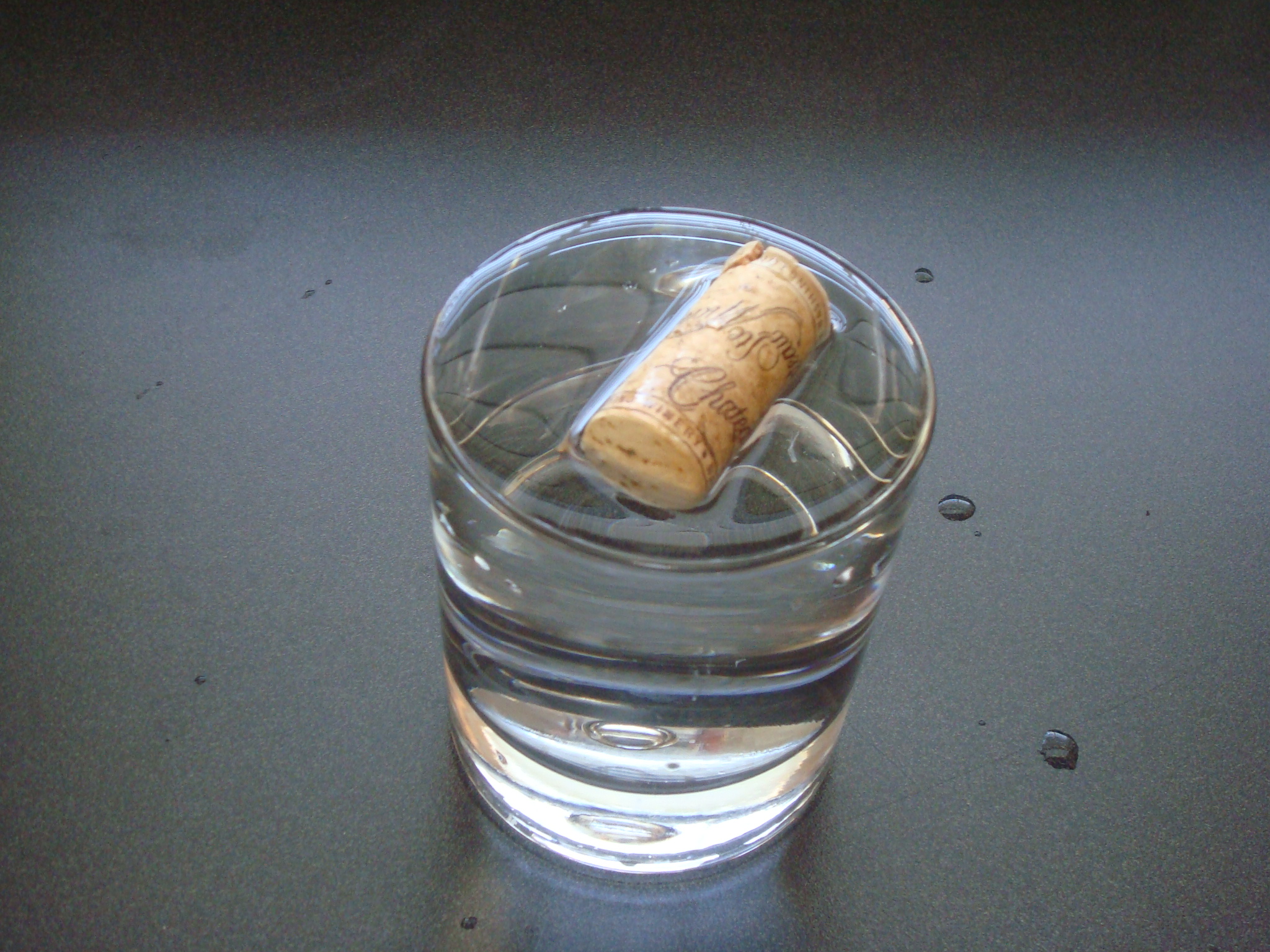Seeking the center
- Fill a glass with water, say about 2/3rds full.
- Place
a cork on the water and try to make it stay at the center of the water
surface. Let go of the cork. The cork will
tend to move towards the side/glass. It is hard to keep the cork off the edges unless you are using a wide container.
- With the cork in the
water, start adding water slowly. As the water level rises and reaches
the rim, the cork will slowly move to the center by itself.
Explanation: The
simple explanation is bouyancy. When the glass is not full, the water
surface is concave. If your child looks carefully near the glass/water
they will notice that the water is higher where it touches the glass
(the adhesive force between water and glass is greater than the
cohesive force between water molecules). So the cork moves to the side
as it seeks the highest point (like a tennis ball rises and rides a
wave if you throw it into the ocean).
Now when you fill the glass, as we saw in the pennies activity, the water surface is now convex. That is, the highest point is in the middle now. So that's where the cork will go.


Next surface tension activity
Previous surface tension activity
Back to surface tension chapter page
Back to main table of contents

